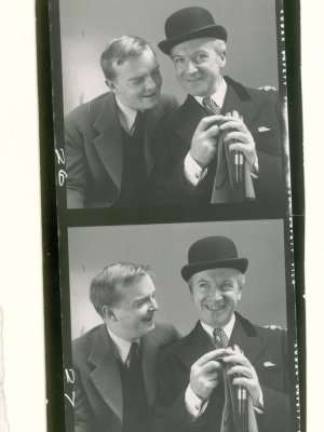Cecil Fabulous

Beaton's New York years revived
By Marsha McCreadie
One high aesthetic compliment is to call an artist ahead of his time. Yet, the real trick is to be both of your time and ahead of it. Cecil Beaton-photographer, illustrator, set and costume designer, even author-turned that trick, and nicely, too.
The fabulous results and even a hint at his motivation are currently exhibited at the Museum of the City of New York. Why there, why now? Well, it's Beaton's "New York Years," the 1920s through the 1960s-the fun decades, at least for him and his crowd. Beaton was a soigné mover in the top artistic and social tiers in both his native England and his semipermanent residence of elegant Manhattan hotel suites.
There's already something gemülichkeit about the approachable museum portico, so the "Beaton Rose," his cozy 1940s fabric design papering the entrance hall, is a needed transition into a glittery world presented with a clever structure, both chronological and thematic. Let's face it: We don't really go to this exhibit to get a career history, though it's there if you want it-from his early surprisingly "romantic" painting and drawing through his magazine photography years and costumes for the Metropolitan Opera.
Subsections are devoted to his pictures of Marilyn Monroe, Wallis Simpson, Greta Garbo (one of Beaton's heartfelt but rare heterosexual love quests and the only "candid" image of her laughing I've ever seen), Elsie de Wolfe, Andy Warhol and Salvador Dali. Also view a sweet-looking young Marlon Brando and a cheery Mick Jagger; both Hepburns-Kate and Audrey, separately; and a sprinkling of socialites.
Decorator de Wolfe got Beaton social access and he flattered, cunningly: "I only photograph those I like and admire." (Summation-type Beaton quotes are posted throughout.) From a wealthy but not aristocratic background, he was clearly more comfortable in a Manhattan filled with other arrivistes than in class-fixed old England.
When the stylistic tide turned against his lush Vogue and Vanity Fair painterly tableaux, shifting to the informal action photography of Richard Avedon and Irving Penn, Beaton didn't wail, he moved on-to sets and costumes for Broadway and Hollywood, though he resented time spent in L.A.
The show highlights details of the Ascot Race set from My Fair Lady, famously imitated by Truman Capote's Plaza Hotel Black and White Ball.
Peek at Beaton's letters and other writing for an ironic self-view. See a handsome-looking woman in a shiny dress and bob, shot from behind, glancing over her shoulder. It's Beaton in drag, clever enough to omit pearls thrown carelessly down the back to tip you off.
Is there a discernable Beaton style? Was he the Picasso of the photography and design world-with a clear signature, even when using multiple modes? No and no. Who cares? He caught various zeitgeists and their emblematic people, made viewers want to look and dress like them and unapologetically took bits and pieces from every genre. You could call it artistic shoplifting (some did)-or, eventually, homage.
Cecil Beaton: The New York Years Through Feb. 20, Museum of the City of New York, 1220 5th Ave., 212-534-1672, www.mcny.org.